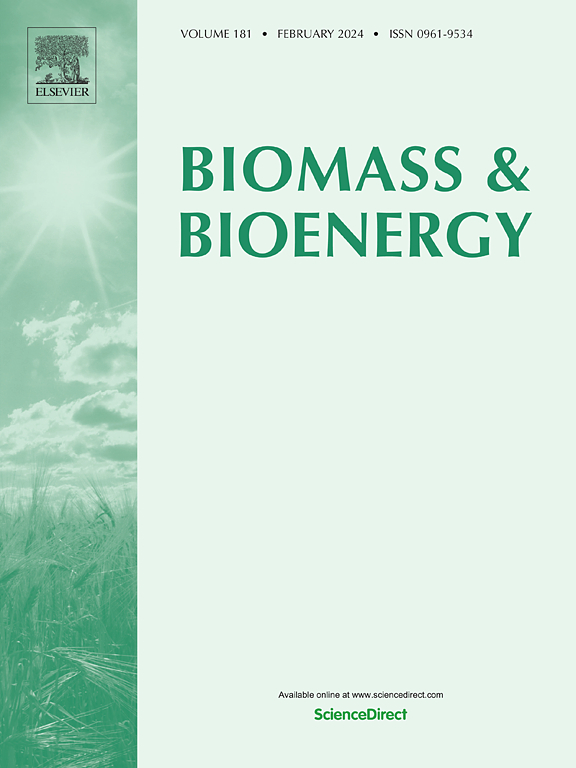Environmentally valorization of olive tree pruning residue: Activated carbons for CO2 capture and energy storage in supercapacitors
IF 5.8
2区 生物学
Q1 AGRICULTURAL ENGINEERING
引用次数: 0
Abstract
Fossil fuels are still the main energy source, and their consumption has caused significant CO2 emissions. In this work, the synthesis of chemically activated carbons from olive tree pruning residues for environmental and energy applications is proposed. The residues were carbonized at 500 °C and then activated with KOH at different activation temperatures and impregnation ratios. Textural and chemical characterization were evaluated by scanning electron microscopy, infrared spectroscopy, and N2 adsorption/desorption isotherms. The influence of activation temperature and impregnation ratio on textural properties and CO2 capture and energy storage performance was investigated. Activated carbons showed a high surface area range of 786–1985 m2 g−1 and significant microporosity development from 0.43 to 1.03 cm3 g−1. For CO2 capture applications, an equilibrium, thermodynamic, and kinetic analysis was performed. The AC600-3/1 presented a maximum adsorption capacity of 265.7 mg of CO2 g−1 at 0 °C and 1 bar. The carbon presented an excellent performance in 10 successive cycles of CO2 adsorption-desorption; the adsorption capacity was just reduced by 2.7 % at 30 °C. For applications in the energy storage field, all the activated carbons shown an adequate electrochemical performance for their use as active materials in supercapacitors. AC600-6/1 showed the maximum specific capacitance and energy, with values up to 707.5 F g−1 and 196.53 Wh kg−1, respectively at 0.33 A g−1. The valorization of olive tree pruning residue through activated carbons provides a solution to a disposal problem and it generates two environmentally friendly applications (CO2 capture and energy storage).

求助全文
约1分钟内获得全文
求助全文
来源期刊

Biomass & Bioenergy
工程技术-能源与燃料
CiteScore
11.50
自引率
3.30%
发文量
258
审稿时长
60 days
期刊介绍:
Biomass & Bioenergy is an international journal publishing original research papers and short communications, review articles and case studies on biological resources, chemical and biological processes, and biomass products for new renewable sources of energy and materials.
The scope of the journal extends to the environmental, management and economic aspects of biomass and bioenergy.
Key areas covered by the journal:
• Biomass: sources, energy crop production processes, genetic improvements, composition. Please note that research on these biomass subjects must be linked directly to bioenergy generation.
• Biological Residues: residues/rests from agricultural production, forestry and plantations (palm, sugar etc), processing industries, and municipal sources (MSW). Papers on the use of biomass residues through innovative processes/technological novelty and/or consideration of feedstock/system sustainability (or unsustainability) are welcomed. However waste treatment processes and pollution control or mitigation which are only tangentially related to bioenergy are not in the scope of the journal, as they are more suited to publications in the environmental arena. Papers that describe conventional waste streams (ie well described in existing literature) that do not empirically address ''new'' added value from the process are not suitable for submission to the journal.
• Bioenergy Processes: fermentations, thermochemical conversions, liquid and gaseous fuels, and petrochemical substitutes
• Bioenergy Utilization: direct combustion, gasification, electricity production, chemical processes, and by-product remediation
• Biomass and the Environment: carbon cycle, the net energy efficiency of bioenergy systems, assessment of sustainability, and biodiversity issues.
 求助内容:
求助内容: 应助结果提醒方式:
应助结果提醒方式:


